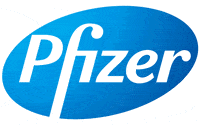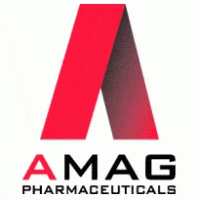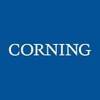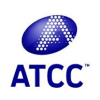Induced pluripotent stem cells (iPSCs) represent a rapidly evolving area of stem cell science. Since the discovery of the cell type in 2006, there have been several important market events, including the first ever clinical trial in humans which launched in August of 2013 to evaluate the capacity of iPSC-derived cell sheets for their ability to restore vision in patients with wet-type macular degeneration. While this trial has since been paused due to safety concerns, it represents a major milestone in clinical progress with iPSCs.
In another recent event that reverberated throughout the stem cell research community, the Supreme Court rejected the right of the Wisconsin Alumni Research Foundation (WARF) to control patents related to iPSC derivation in a landmark patent decision issued February 2015.
Indeed, every month there are major events occurring in the iPSC sector that shift industry dynamics. Read on to get informed about the most important iPSC market events that occurred in July of 2015.
iPSC News Round-Up for July 2015
[FEATURED NEWS]
Mutation alert halts stem-cell trial to cure blindness
[July 31, 2015] A pioneering stem-cell trial has been halted after genetic mutations were discovered in the cells of the second trial participant. One of the mutations may carry a remote risk of cancer. There is a lot resting on the outcome of the trial. It could provide the first glimpse of the clinical potential of iPS cells, which were created for the first time in 2006. Read more…
[OTHER NEWS]
-
Stem Cell Theranostics secures “freedom to operate” in IP deal with GE Healthcare
[July 21, 2015] Stem Cell Theranostics has secured rights to the technology it uses to make cellular heart disease models for drug development through a deal with GE Healthcare. Read more…
-
Fate Therapeutics (FATE) Enters NK Cell-Based Immunotherapeutics Research Collaboration
[July 14, 2015] Fate Therapeutics has entered into a research collaboration with Regents of the University of Minnesota for the development of natural killer (NK) cell-based cancer immunotherapeutics. The collaboration will foster the advancement of two distinct therapeutic programs, both of which aim to leverage the inherent ability of NK cells to rapidly detect and effectively destroy malignant cells without prior antigen exposure or administration of a patient’s own immune cells. Read more…
-
Production of iPS cells: Discovery of the fifth element
[July 8, 2015] Fabrice Lavial’s team, in collaboration with Patrick Mehlen’s team, sought to identify new regulators of the genesis of iPS cells.With this objective, the researchers directed their attention to the factors affected by the four inducing genes involved in the initiation of reprogramming. They then selected from this list those known to have a role in programmed cell death, and with a level of expression that varies over the course of reprogramming. After this screening process, one molecule emerged: netrin-1. Read more…
-
Researchers create model of early human heart development from stem cells
[July 14, 2015] UC Berkeley researchers, in collaboration with scientists at the Gladstone Institutes, have developed a template for growing beating cardiac tissue from stem cells, creating a system that could serve as a model for early heart development and as a drug-screening tool to make pregnancies safer.
In experiments published today in the journal Nature Communications, the researchers used biochemical and biophysical cues to prompt stem cells to differentiate and self-organize into micron-scale cardiac tissue, including microchambers. Read more…
-
Stem cell treatments for mitochondrial disease may be possible
[July 15, 2015] Doctors have limited options for treating mitochondrial disease, but a team led by a prominent innovator may have taken an important step toward developing new therapies: rewinding diseased cells from patients to create pluripotent stem cells with healthy mitochondrial DNA.
Cells like these, which potentially could be reprogrammed to develop into a variety of different cell types, could someday be the basis for individualized transplant therapies that could counteract some of the severe impairments mitochondrial disease inflicts, including cardiac, vision and neurological woes. Read more…
-
New measurements reveal differences between stem cells for treating retinal degeneration
[July 2, 2015] By growing two types of stem cells in a “3-D culture” and measuring their ability to produce retinal cells, a team lead by St. Jude Children’s Research Hospital researchers has found one cell type to be better at producing retinal cells.
The research not only reveals which stem cell type might be better for treating retinal degeneration, but it also demonstrates a standardized method for quantifying the effectiveness of different stem cells for such therapies. Read more…
-
Cholangiocytes derived from human induced pluripotent stem cells for disease modeling and drug validation
[July 13, 2015] The study of biliary disease has been constrained by a lack of primary human cholangiocytes. The authors use cholangiocyte-like cells (CLCs) to model in vitro key features of Alagille syndrome, polycystic liver disease and cystic fibrosis (CF)-associated cholangiopathy. Furthermore, they use CLCs generated from healthy individuals and patients with polycystic liver disease to reproduce the effects of the drugs verapamil and octreotide, and they show that the experimental CF drug VX809 rescues the disease phenotype of CF cholangiopathy in vitro.
Our differentiation protocol will facilitate the study of biological mechanisms controlling biliary development, as well as disease modeling and drug screening. Read more…
-
Researchers use pioneering stem cell techniques to better understand causes of Spinal Muscular Atrophy
[July 1, 2015] The researchers found that during the process of differentiation (when cells change from stem to their final shape) two key proteins change in a significant way in motor neurons, which could explain why these cells are more susceptible to degeneration in spinal muscular atrophy. The findings can now be used for testing therapies in the Induced pluripotent stem cells and motor neurons. Read more…
Future Posts
To receive future posts about the stem cell industry, sign-up here. We will never share your information with anyone, and you can opt-out at any time. No spam ever, just great stuff.
About Us
BioInformant is the only research firm that has served the stem cell sector since it emerged. Our management team comes from a BioInformatics background – the science of collecting and analyzing complex genetic codes – and applies these techniques to the field of market research. BioInformant has been featured on news outlets including the Wall Street Journal, Nature Biotechnology, CBS News, Medical Ethics, and the Center for BioNetworking.
Serving Fortune 500 leaders that include GE Healthcare, Pfizer, Goldman Sachs, Beckton Dickinson, and Thermo Fisher Scientific, BioInformant is your global leader in stem cell industry data.
To learn more about iPSC industry trends and events, view the “Compete 2015-16 Induced Pluripotent Stem Cell (iPSC) Industry Report.”





















Tell Us What You Think!